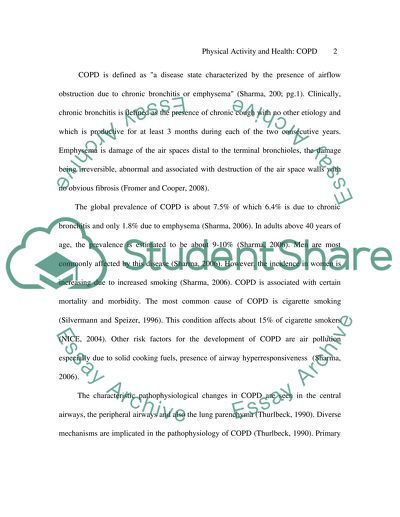Cite this document
(“Physical activity and health: COPD Essay Example | Topics and Well Written Essays - 4500 words”, n.d.)
Retrieved from https://studentshare.org/health-sciences-medicine/1411221-physical-activity-and-health-copd
Retrieved from https://studentshare.org/health-sciences-medicine/1411221-physical-activity-and-health-copd
(Physical Activity and Health: COPD Essay Example | Topics and Well Written Essays - 4500 Words)
https://studentshare.org/health-sciences-medicine/1411221-physical-activity-and-health-copd.
https://studentshare.org/health-sciences-medicine/1411221-physical-activity-and-health-copd.
“Physical Activity and Health: COPD Essay Example | Topics and Well Written Essays - 4500 Words”, n.d. https://studentshare.org/health-sciences-medicine/1411221-physical-activity-and-health-copd.


